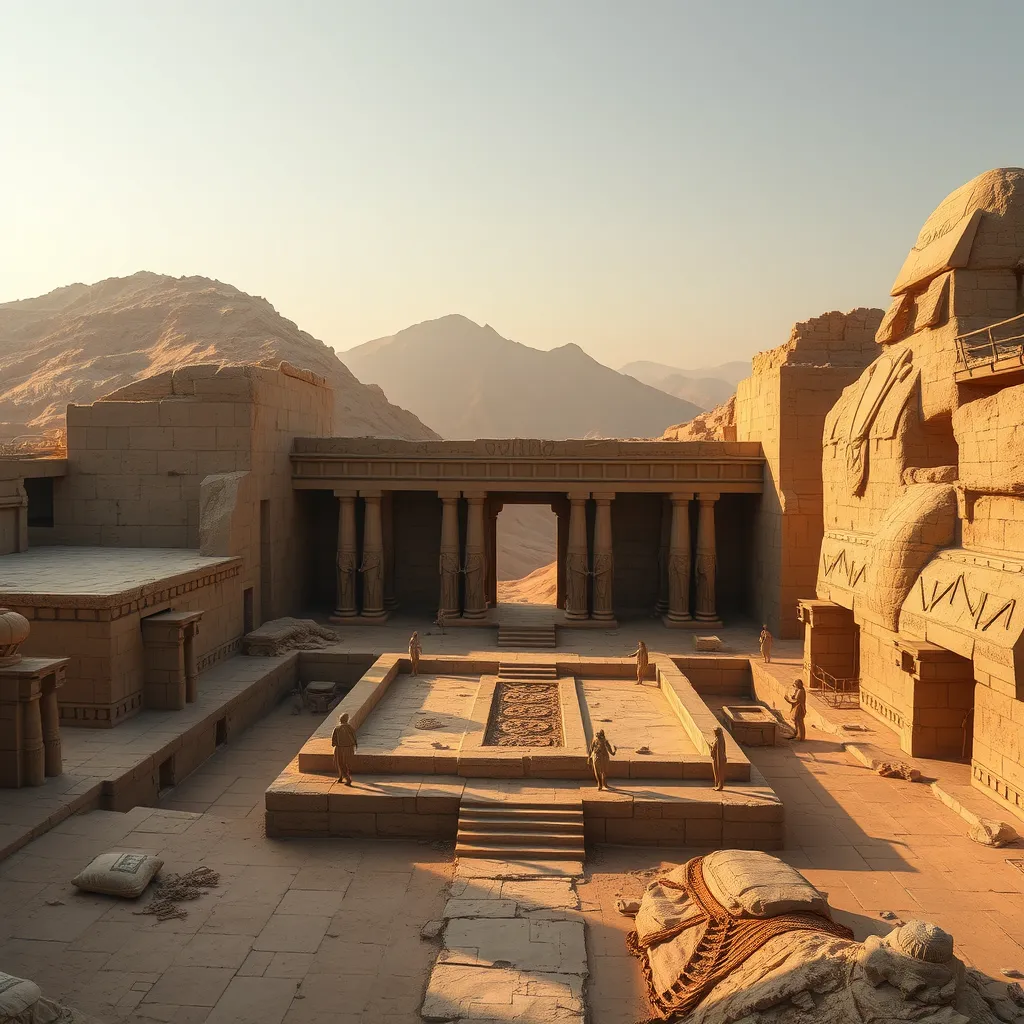The Duat: A Place of Healing and Reconciliation
I. Introduction
The Duat, a prominent concept in Ancient Egyptian beliefs, refers to the underworld or the realm of the dead. It is a complex dimension where the souls of the deceased journey after death. The Duat is not merely a place of darkness and despair; instead, it embodies profound significance as a realm of healing and reconciliation, essential for the afterlife journey of the soul.
This article aims to explore the multifaceted nature of the Duat, examining its historical context, structure, and the roles it plays in healing and reconciliation within the Ancient Egyptian worldview. We will also delve into its representation in art and literature, as well as its modern interpretations and influences.
II. Historical Context of the Duat
The origins of the Duat can be traced back to the early dynastic periods of Ancient Egypt, where it was depicted as a shadowy realm that the dead must navigate. Over time, the concept of the Duat evolved through different dynasties, reflecting the changing beliefs and practices surrounding death and the afterlife.
In the Old Kingdom, the Duat was primarily viewed as a place filled with trials and challenges for the deceased. By the Middle Kingdom, it became clearer that the Duat also represented a space for healing and transformation, emphasizing the soul’s journey toward eventual resurrection. The cultural significance of the Duat is immense, as it served as a bridge between life and the afterlife, influencing burial practices, funerary texts, and the overarching understanding of death.
III. The Structure of the Duat
The Duat is often described as a vast and intricate landscape, comprising various regions and realms. These regions are inhabited by numerous deities, each playing a distinct role in the afterlife journey of souls.
- The Fields of Aaru: A paradise-like area where the souls of the righteous dwell in peace.
- The Lake of Fire: A treacherous area representing punishment for the wicked.
- Osiris’ Court: The place where souls are judged and transformed.
Key deities associated with the Duat include:
- Osiris: The god of the afterlife, resurrection, and fertility, who oversees the judgment of souls.
- Thoth: The god of wisdom, writing, and magic, who records the results of the Weighing of the Heart ceremony.
- Isis: The goddess of magic and motherhood, who plays a crucial role in the resurrection of Osiris and the protection of souls.
The landscape of the Duat is rich with symbolism, representing the trials and tribulations of the soul. Elements such as water, fire, and darkness all serve to highlight the transformative journey that souls undergo.
IV. Healing in the Duat
In Ancient Egyptian beliefs, healing is not limited to physical ailments but extends to the spiritual realm as well. The Duat is seen as a sanctuary where souls can undergo healing processes, guided by various deities.
Rituals and practices associated with healing in the Duat include:
- Funerary Rites: Practices performed to ensure safe passage and healing for the deceased.
- Magical Incantations: Texts and spells designed to protect and heal the soul in its journey.
- Offerings: Ritual offerings made to deities to secure their favor and assistance in the healing process.
The roles of deities like Osiris and Thoth are paramount in this healing process. Osiris, as the god of resurrection, embodies the potential for renewal, while Thoth provides the wisdom necessary for navigating the complexities of the afterlife.
V. Reconciliation and Transformation
The process of reconciliation in the afterlife journey is crucial for the soul’s transformation and acceptance into the afterlife. One of the most significant rituals associated with this process is the Weighing of the Heart ceremony.
During this ceremony, the heart of the deceased is weighed against the feather of Ma’at, which represents truth and justice. The outcome of this judgment determines whether the soul is deemed worthy of entering the Fields of Aaru or if it faces punishment.
The transformation of the soul has profound implications for the living. It emphasizes the importance of living a life of virtue and balance, as actions in life directly influence the soul’s fate in the Duat.
VI. The Duat in Art and Literature
The Duat has been a rich source of inspiration in ancient texts and tomb paintings, where it is depicted in various forms. The Book of the Dead, for example, contains spells and illustrations guiding the deceased through the Duat.
Symbolic interpretations of art related to healing and reconciliation often reflect the dual nature of the Duat as both a place of trials and a realm of healing. Key themes include:
- Judgment: Illustrations of the Weighing of the Heart ceremony.
- Resurrection: Depictions of Osiris and scenes of rebirth.
- Protection: Images of protective deities safeguarding the deceased.
The influence of the Duat on later cultural narratives can be seen in various mythologies and spiritual beliefs that emphasize the importance of the afterlife journey.
VII. Modern Interpretations and Influence
In contemporary spiritual practices, the Duat holds a place of intrigue. Modern interpretations often focus on the concepts of healing, transformation, and the reconciliation of the self.
The influence of the Duat can also be observed in modern healing methodologies and reconciliation concepts, where individuals seek to heal emotional and spiritual wounds. The revival of interest in ancient Egyptian beliefs has led to a resurgence of practices that honor the wisdom of the past.
VIII. Conclusion
In summary, the Duat serves as a profound symbol of healing and reconciliation within Ancient Egyptian beliefs. Its rich history, complex structure, and the roles of deities highlight the significance of this realm in the journey of the soul.
The enduring legacy of the Duat continues to resonate, providing insights into the human experience of life, death, and the transformative power of healing. As we reflect on the relevance of the Duat in today’s world, it becomes clear that its teachings on reconciliation and the journey of the soul remain timeless and vital.




